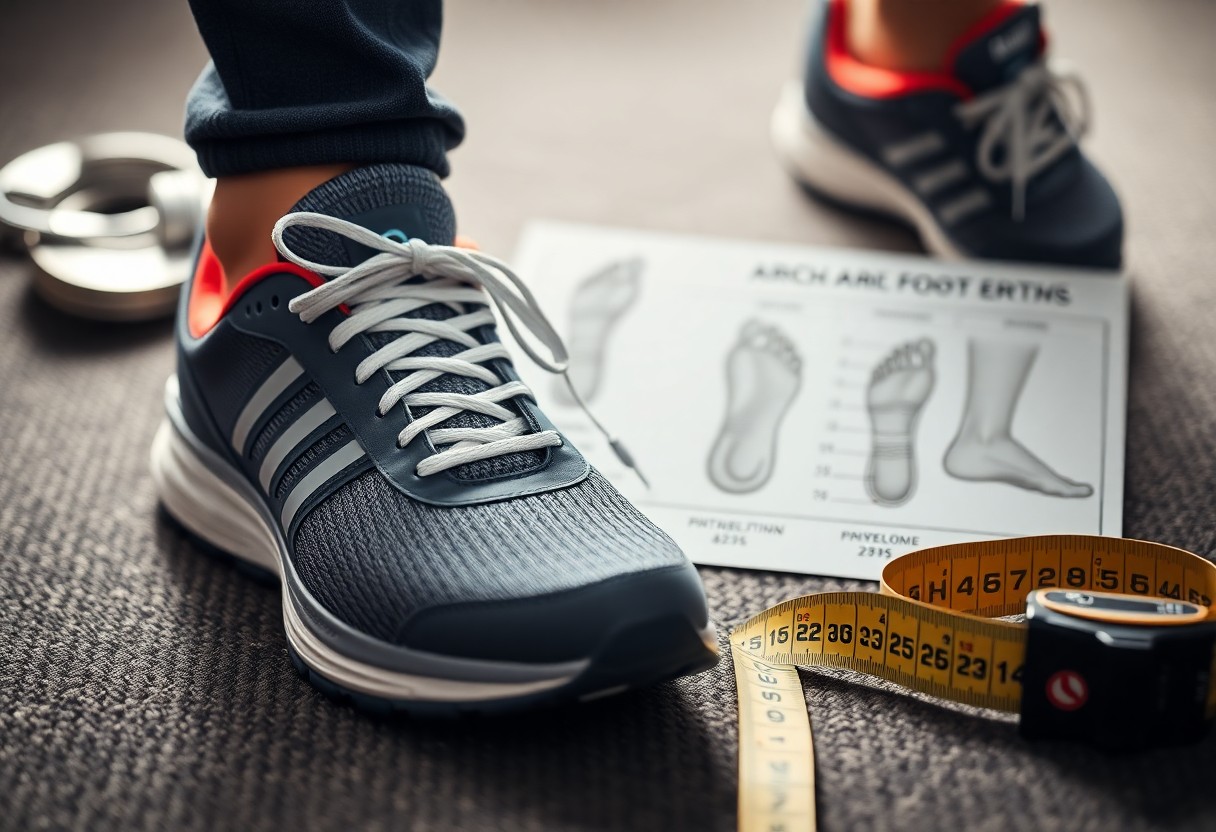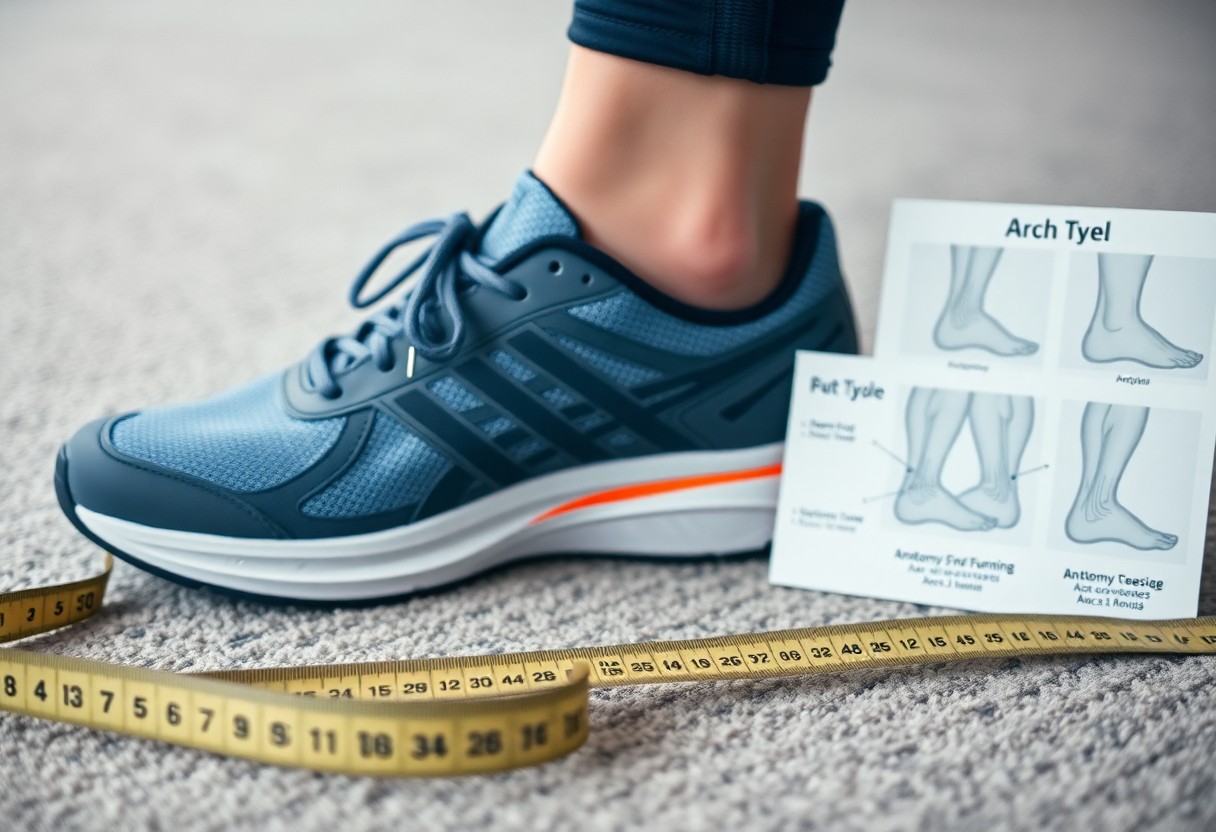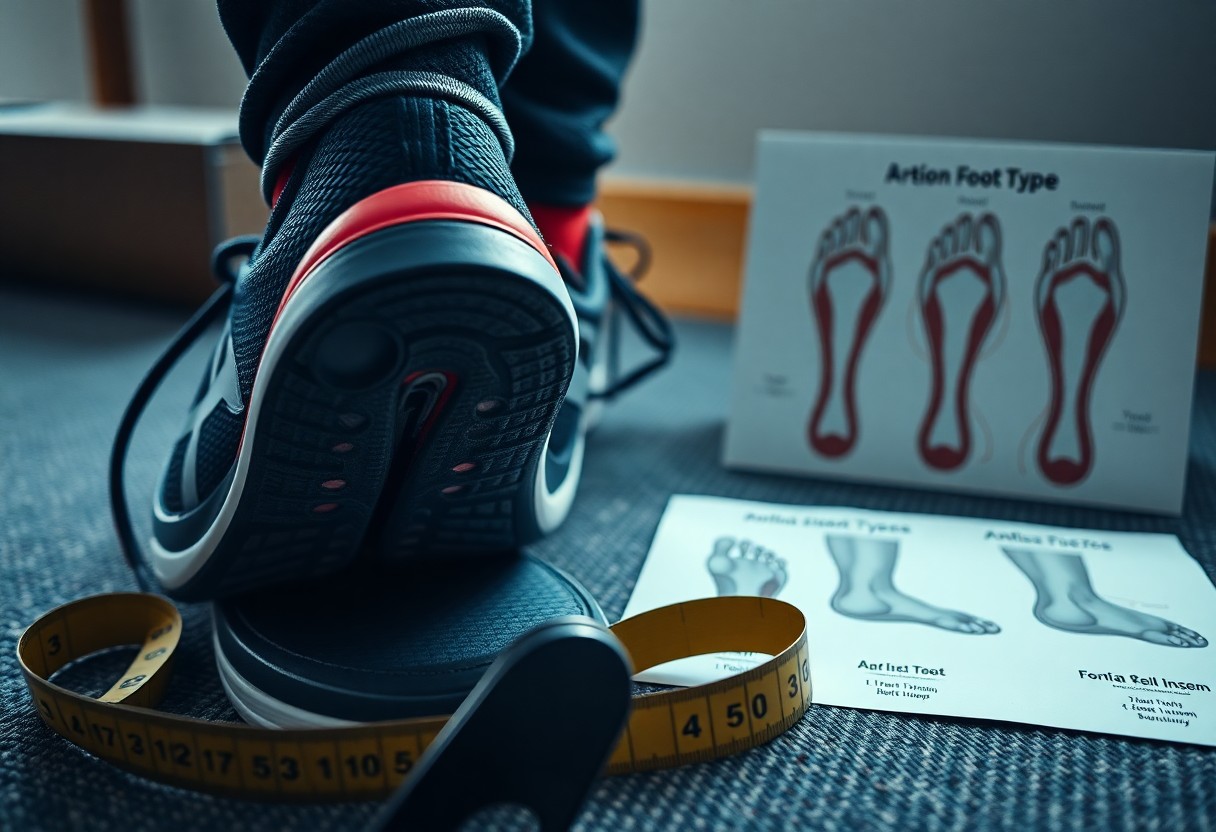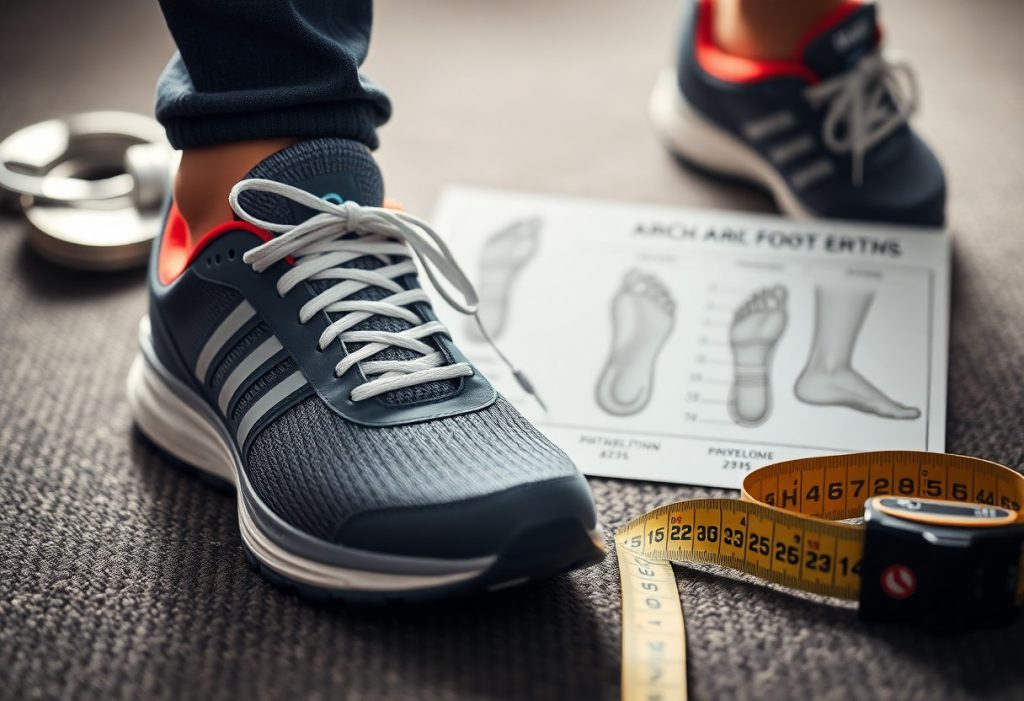Supporting your feet effectively goes beyond merely adding arch support to your footwear. Surprisingly, most people do not actually need arch support in their shoes. Research indicates that avoiding artificial arch support can strengthen your foot muscles over time. Over-relying on such supports may lead to muscle atrophy. The human foot is naturally designed with arches that flex and conform to different surfaces, and imposing rigid supports can disrupt this natural function, potentially harming your foot health long-term. This detailed article will explore the science behind arch support, empowering you to make well-informed choices about your foot care.

Exploring the Evolution of Arch Support in Footwear Design
The natural support system of your feet has been a fundamental aspect of footwear design throughout history. The concept of arch support surged in popularity during the 1920s when Dr. William Scholl introduced commercial orthotics. Before this innovation, people relied on the natural strength and flexibility of their feet. Understanding the historical context of arch support sheds light on how our perceptions of foot health have changed, pointing to a need for a reevaluation of contemporary footwear practices.
Tracing the Shift from Traditional Footwear to Modern Designs
The transformation of footwear practices over the centuries shows that ancient civilizations primarily used simple, flat sandals or often went barefoot. These practices allowed for natural foot development and strength. Our ancestors’ feet remained strong and adaptable without the need for artificial supports, as evidenced by studies of indigenous groups who continue to wear traditional footwear. This historical viewpoint highlights the critical importance of natural foot mechanics in preserving foot health, often overlooked in today’s modern footwear trends.
Examining the Effects of Contemporary Shoe Designs on Foot Wellness
By the mid-20th century, notably in the 1950s, shoe manufacturers began to standardize built-in arch support in their designs. Currently, most modern shoes feature structured arch support, a practice that has become commonplace despite limited scientific justification for its necessity across the board. This trend mirrors shifting consumer expectations and industry norms but provokes important questions regarding the implications of such designs on foot health. With around 70% of contemporary shoes incorporating arch support, it’s essential to assess whether this trend is genuinely beneficial or potentially harmful.
Research published in the Journal of Foot and Ankle Research suggests that an overdependence on arch support may lead to muscle weakness in your feet. Consequently, many podiatrists now encourage practices like barefoot walking and opting for minimally supportive shoes to help maintain natural foot strength and promote holistic foot health.

Understanding the Intricate Structure of the Human Foot
Your feet consist of 26 bones, 33 joints, and over 100 muscles, functioning most effectively when granted the freedom to move. The arch of the foot is a self-supporting structure that strengthens with regular use and deteriorates under the influence of artificial supports. Studies show that 75% of individuals who wear conventional footwear with arch support exhibit decreased foot muscle activity, potentially leading to diminished natural strength over time. This emphasizes the importance of allowing your feet to engage in their natural movements.
Recognizing the Advantages of Natural Foot Functionality
The design of your foot is an incredible feat of nature, featuring a sophisticated system capable of self-support. Engaging in barefoot walking or wearing minimal shoes allows the feet to experience a complete range of motion, thereby enabling natural flexing and strengthening of the arches. Research indicates that individuals who frequently walk barefoot or use minimal footwear develop stronger foot muscles and more resilient arches compared to those who depend on supportive shoes. This finding underscores the significance of natural movement in enhancing foot health, as it aids the body in maintaining its structural integrity.
Implementing Strategies to Boost Foot Muscle Functionality and Growth
Interference with your foot's natural movement can impede its development. Your foot muscles require routine engagement through natural activities to preserve their strength. Research published in Nature indicates that wearing shoes without arch support promotes the growth of stronger intrinsic foot muscles. This correlation highlights the necessity of natural movement for optimal foot health, particularly for individuals experiencing discomfort or weakness in their feet.
Moreover, it’s essential to understand the effects of wearing shoes with built-in arch support. Continuous use of these shoes may lead to decreased muscle engagement, resulting in potential weakness over time. Studies indicate that transitioning to minimal footwear can enhance foot muscle strength by as much as 60% within eight weeks. However, it’s important to approach this transition with caution, particularly if you have existing foot conditions, to prevent injury and support a healthy adaptation process.
Reviewing Scientific Evidence and Research Related to Foot Health
If you’re curious about the scientific basis for arch support, numerous studies indicate that your feet can gain strength without artificial support. Various investigations show that natural foot movement enhances muscle development and improves arch stability, stressing the critical role of biomechanics in foot health and the potential risks associated with excessive reliance on artificial supports.
Highlighting Key Scientific Studies on the Necessity of Arch Support
Among the most significant findings, a study published in Nature reveals that individuals who utilize minimal footwear develop foot muscles that are 50% stronger than those who wear traditional supportive shoes. This evidence reinforces the idea that regular movement and activity enable the feet to maintain their arches naturally, highlighting the advantages of selecting the appropriate footwear.
Comparative Assessment of Footwear Choices Among Diverse Populations
Contrasting Users of Traditional and Minimal Footwear
| Traditional Shoe Users | Minimal Shoe Users |
| Experience higher rates of flat feet | Exhibit superior arch strength |
| Show weaker foot muscles | Demonstrate stronger foot muscles |
A comprehensive examination of various populations uncovers significant differences in foot health. The structure of your feet can adapt considerably based on the type of footwear you choose, emphasizing the importance of actively evaluating your footwear selections.
Insights Gleaned from Global Population Research
| Developed Nations | Barefoot Communities |
| 20% incidence of flat feet | 3% incidence of flat feet |
| Increased reliance on arch support | Natural arch strength |

Analyzing the Paradox of Support in Footwear Selections
Challenging common misconceptions, overreliance on arch support in shoes may undermine your feet’s inherent strength. The human foot is exquisitely crafted with a complex network of muscles, tendons, and ligaments that work together to offer natural support. When artificial arch support takes over this function, foot muscles may become less active, resulting in gradual weakening and a diminished capacity to perform daily activities effectively.
Recognizing the Cycle of Dependency Related to Arch Support
Consistent use of arch support results in an adverse cycle. Feet can develop a reliance on external support, causing muscle atrophy. Research shows that 70% of individuals who regularly use arch support report increased discomfort when walking without these supportive shoes, pointing to the emergence of this dependency that can negatively impact overall mobility and comfort.
Connecting Muscle Weakness with Excessive Usage of Arch Support
Wearing shoes with built-in arch support could weaken your intrinsic foot muscles by as much as 50%, as noted in findings from Nature. This weakening compromises the natural arch support system of your feet, potentially leading to ailments such as flat feet and other foot-related complications. It’s important to recognize that this muscle weakness can affect more than just your feet; weakened foot muscles can negatively influence your overall posture and balance. Research indicates that individuals transitioning to minimal footwear often experience a 60% increase in foot muscle strength within six months, further demonstrating the benefits of minimizing unnecessary supports.
Exploring Natural Alternatives for Strengthening Foot Health
For those interested in moving away from traditional arch support, numerous natural alternatives exist that can promote foot strength. These methods emphasize allowing your feet to function as they were intended, fostering the development of stronger foot muscles and more stable arches through natural movement and practices that enhance foot wellness.
Adopting Minimalist Footwear for Optimal Natural Foot Movement
Minimalist shoes, characterized by zero drop soles, spacious toe boxes, and flexible materials, facilitate natural foot movement. These designs empower your feet to move freely, helping maintain proper foot mechanics and promote natural arch strength. Research suggests that regular use of minimal footwear can boost foot muscle strength by up to 60% through daily activities, emphasizing the importance of selecting the right footwear for your lifestyle.
Practical Approaches for Safely Transitioning to Minimal Footwear
When contemplating a shift to minimalist footwear, it’s vital to take a careful and gradual approach for your safety and comfort. Begin wearing minimal shoes for short intervals, gradually increasing the duration over several weeks. This strategy helps prevent overuse injuries as your feet acclimatize to their newfound freedom, ensuring a smoother transition that promotes long-term foot health.
A successful transition should ideally involve specific foot-strengthening exercises. Start with 10-15 minutes each day in minimal shoes, adding an additional 5-10 minutes weekly. Incorporate exercises such as toe spreads and short barefoot walks on safe surfaces. This incremental strategy enables you to reduce the risk of common transition injuries while effectively enhancing your natural arch strength, ultimately fostering better overall foot health.
Considering Individual Medical Factors for Optimal Foot Wellness
It’s crucial to recognize that your foot health necessitates personalized attention. While natural foot movement is beneficial for muscle strength, certain medical conditions may require specific support. Factors including your foot structure, activity level, and pre-existing conditions will influence your ideal footwear needs, highlighting the necessity for tailored assessments.
Identifying Specific Conditions That May Justify Arch Support
Contrary to popular belief, arch support isn’t universally required. However, individuals with acute injuries, severe flat feet, or specific medical conditions may find temporary or permanent arch support beneficial. Research indicates that only 10-20% of the population genuinely requires specialized arch support for medical reasons, underscoring the importance of personalized assessments to ensure optimal foot health.
Guidelines for Comprehensive Professional Foot Health Evaluations
To ensure informed decisions regarding your footwear, it’s wise to consult a foot health specialist. Comprehensive evaluations should include gait analysis, foot structure assessment, and a review of medical history. These components are vital for determining whether arch support is necessary or if transitioning to minimal footwear is a suitable option for your unique circumstances.
Guidance from a qualified professional can offer clarity and direction throughout your foot health journey. A thorough assessment should encompass measuring arch flexibility, evaluating muscle strength, and analyzing gait patterns. Your healthcare provider should also consider your daily activities and any prior foot injuries to develop an effective treatment plan tailored to your specific needs and lifestyle.
Analyzing Footwear Selections and Their Effects on Foot Wellness
Your footwear choices play a crucial role in determining your foot health. As you now understand, arch support is not essential for most individuals and can, in fact, weaken foot muscles over time. Your feet possess inherent strength and flexibility, functioning best when allowed to perform as nature intended. If you’re contemplating a transition to minimal footwear, starting this journey gradually will help your feet adapt effectively. The evidence strongly indicates that allowing your feet to function without artificial support can lead to stronger muscles and improved foot health for the majority. Always consider your individual needs and consult a foot health professional for specific concerns regarding your foot health.
Common Questions Regarding Arch Support and Foot Health
Do healthy feet genuinely need arch support in shoes?
Most healthy feet do not require arch support in footwear. Studies reveal that natural foot strength develops more efficiently without artificial support. The muscles and arches of the feet function optimally when permitted to operate naturally. This aligns with research on populations that frequently walk barefoot or prefer minimal shoes, which show stronger foot muscles and fewer arch-related complications.
Can relying on arch support weaken feet over time?
Indeed, prolonged dependence on arch support can cause foot muscles to weaken. When artificial support substitutes for foot muscle function, those muscles become less active and gradually lose strength. This can create a cycle of dependency. Research published in Nature shows that individuals who consistently wear conventional shoes with arch support often display weaker foot muscles compared to those who choose minimal footwear.
Who may truly require arch support in their shoes?
Some individuals with specific foot conditions, injuries, or medical issues may genuinely benefit from arch support. This includes those diagnosed with flat feet, specific injuries, or structural abnormalities. However, these instances should be assessed by a foot health professional capable of formulating an appropriate treatment plan. The goal should be to restore natural foot function whenever possible, rather than relying on permanent support.
The Article Arch Support: Essential Facts About Shoe Necessities Was Found On https://limitsofstrategy.com
The Article Arch Support: Key Insights on Essential Shoe Needs First Appeared ON
: https://ad4sc.com


Ah, the great arch support debate—it’s like the foot’s version of the chicken or the egg conundrum, isn’t it? Who knew that the simple act of strapping on a pair of shoes could incite such philosophical musings? I must confess, I’ve had my share of footwear follies. Picture this: an enthusiastic me, at a hiking store, convinced that adding a pair of orthopedic insoles would solve all my feet-related woes. Spoiler alert: they didn’t. My feet felt like they were trapped in a very fancy foot prison, never quite able to bask in the glory of nature. Who knew that a little bit of discomfort could lead to a profound revelation about foot health?
You’ve really captured the essence of the great arch support debate perfectly! It’s wild when you think about how something as seemingly straightforward as footwear can spark such curiosity about our bodies and how they interact with the world. Your experience with those orthopedic insoles is relatable; many of us have taken similar detours in the pursuit of comfort. It’s almost like we believe there’s a magic fix out there, waiting to be strapped onto our feet.
“Ah, the quest for foot comfort is indeed a journey worth exploring! If you’re curious about finding that perfect blend of support without sacrificing freedom, check out my favorite options here!”
https://oldicom.net/quillbot
It’s fascinating to consider how our understanding of foot health has evolved alongside footwear design. Growing up, I wore shoes with extensive arch support, convinced they were necessary for comfort. However, after exploring minimalist footwear and the principles behind natural foot movement, I’ve experienced a palpable difference. My feet feel stronger and more resilient without artificial support.
It’s really intriguing how much our perceptions of foot health and footwear have shifted over the years. I can relate to your experience with arch support—growing up, I also thought that more support meant better comfort. It’s almost counterintuitive that by stripping away those artificial supports, our feet can actually gain strength and adaptability.